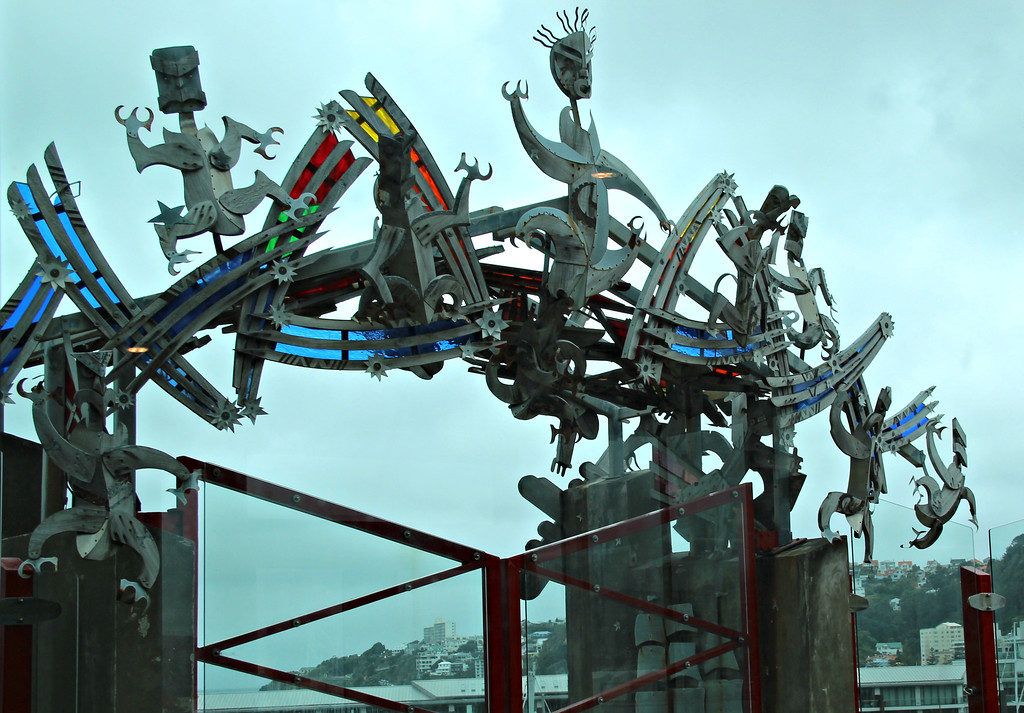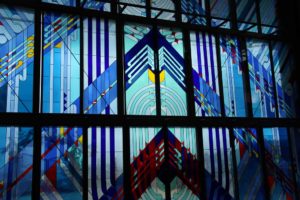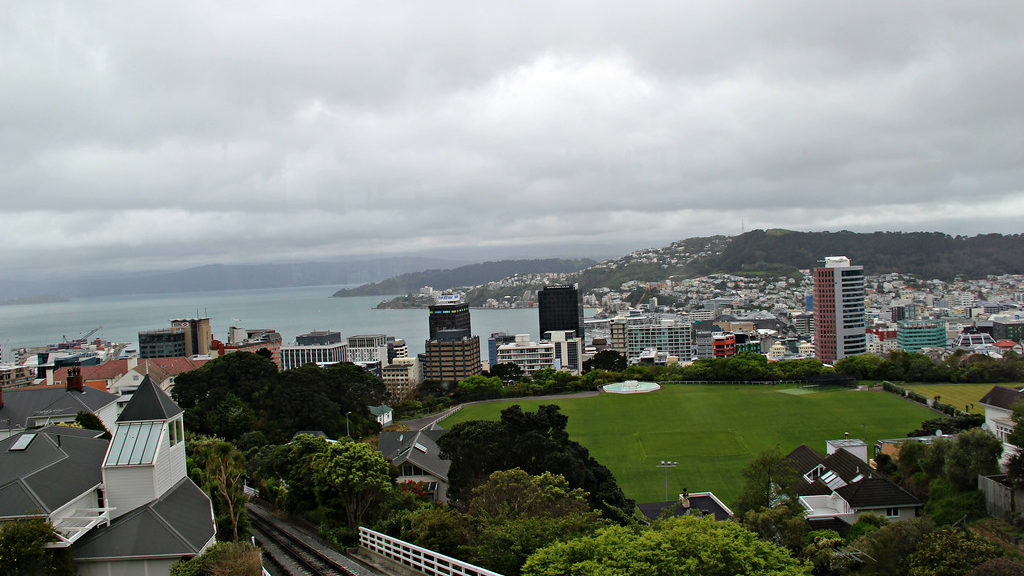
Wellington
We took an international flight from Sydney to Wellington, New Zealand. While we saw iconic attractions in Australia, New Zealand featured beauty everywhere. New Zealand is believed to be one of the last places in the world to be inhabited, with people initially coming from Polynesia – perhaps around 1250AD. It is also relatively isolated from other parts of the world. I had always thought of New Zealand and Australia as being relatively close, but they are actually about 1,000 miles apart. Today New Zealanders are committed to preserving their country’s natural beauty – including protecting the plants and animals indigenous to the country.
When we entered the country, we went through passport control as you would in any other country – but also a bio-screening. This consisted of completing an entry form and a brief interview. We – and our luggage – were then screened via x-ray. Anyone attempting to bring food or wood products into the country without declaring them face an immediate fine. Even such things as wooden boomerangs (a common souvenir in Australia) must be declared. We did bring something made of wood into New Zealand, declared it, and had no problem bringing it into the country. As we traveled throughout New Zealand, we understood why they take such care to protect their beautiful environment.
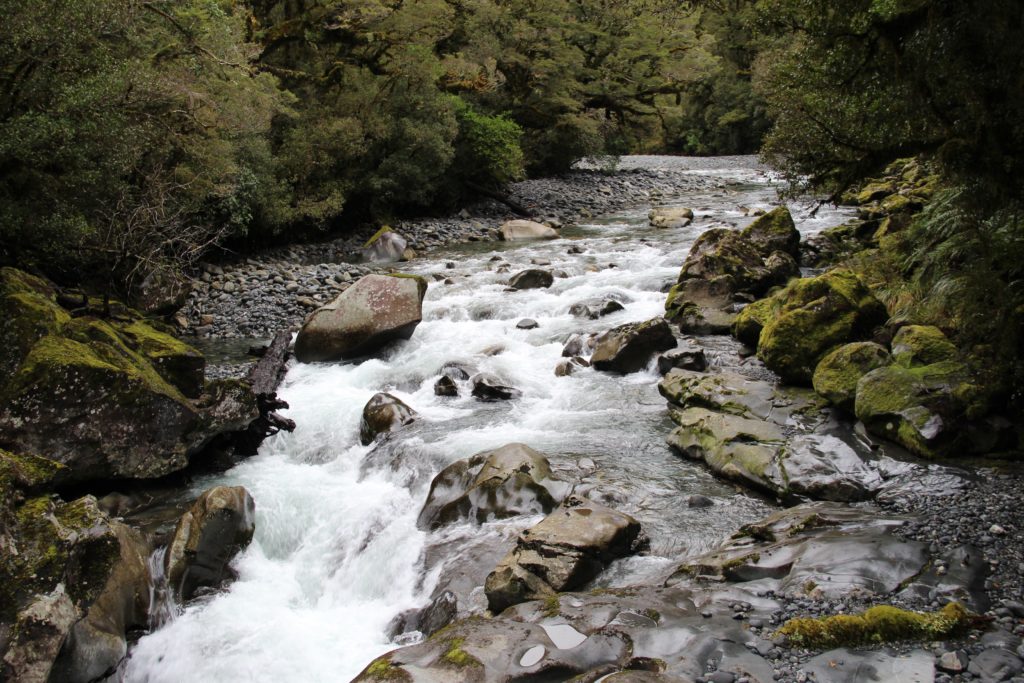
While in Wellington, we visited the parliament buildings. New Zealand is a constitutional monarchy, with Queen Elizabeth serving as the Head of State. She is represented by a governor general in New Zealand. Like the United States, New Zealand has three branches of government. The Parliament serves as their legislative branch. Members of the House are elected via a system called Mixed Member Proportional. Basically this means the percentage of votes the party receives will roughly reflect the number of seats they have in Parliament. Because of the number of political parties, parties generally need to negotiate with another party – forming a coalition – to form the government.
An election is held every three years and actually occurred shortly before our trip began. Negotiations to form a coalition were in progress when we first arrived in New Zealand, so technically there was no government in place. The National Party received the largest percent of votes, followed by the Labour Party and First New Zealand Party. The First New Zealand Party were in talks with both the National Party and the Labour Party, but ultimately signed a coalition agreement with the Labour Party – it was actually signed just a few days before we left New Zealand.
Pictured below are the parliament buildings we saw. The first is the Parliament House. We toured this building, but could not take any pictures inside the building. One of the rooms we visited was The Chamber where the House of Representatives meets to debate bills, etc. The second picture is of the Executive Wing and is referred to as “The Beehive.” The Prime Minister and Cabinet Members have offices here. The last picture is of the Parliamentary Library. It is actually the oldest building (completed in 1899) and is constructed of masonry. The original parliamentary buildings – with the exception of the library thanks to its stone construction – were lost in a fire in 1907.


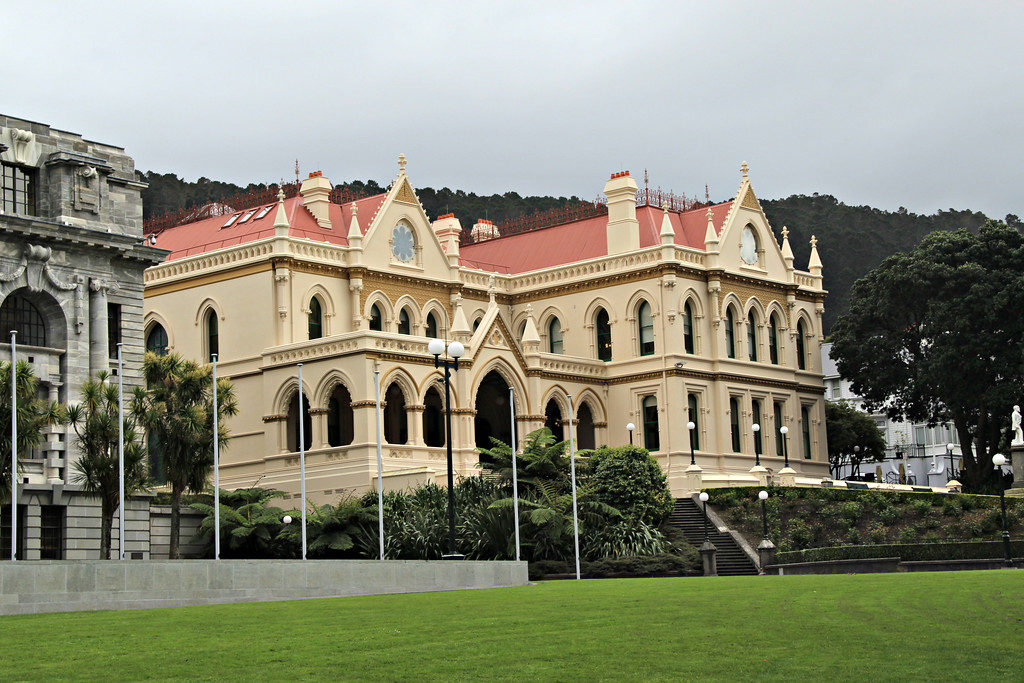
Following our visit to the Parliament buildings, we rode the Wellington Cable Car to Kelburn. The cable car serves both residents and tourists. The original cable car began operation in 1902. Today, the cable cars are owned by the Wellington City Council and operated by the Wellington Cable Car Limited.
The picture of the cable car is one I purchased from Shutterstock.com. There is a great view of Wellington in the background. As we rode through a tunnel, there were lights which are in the second picture below. The picture above the title of this blog entry was taken looking down at Wellington after we got off the cable car at Kelburn.
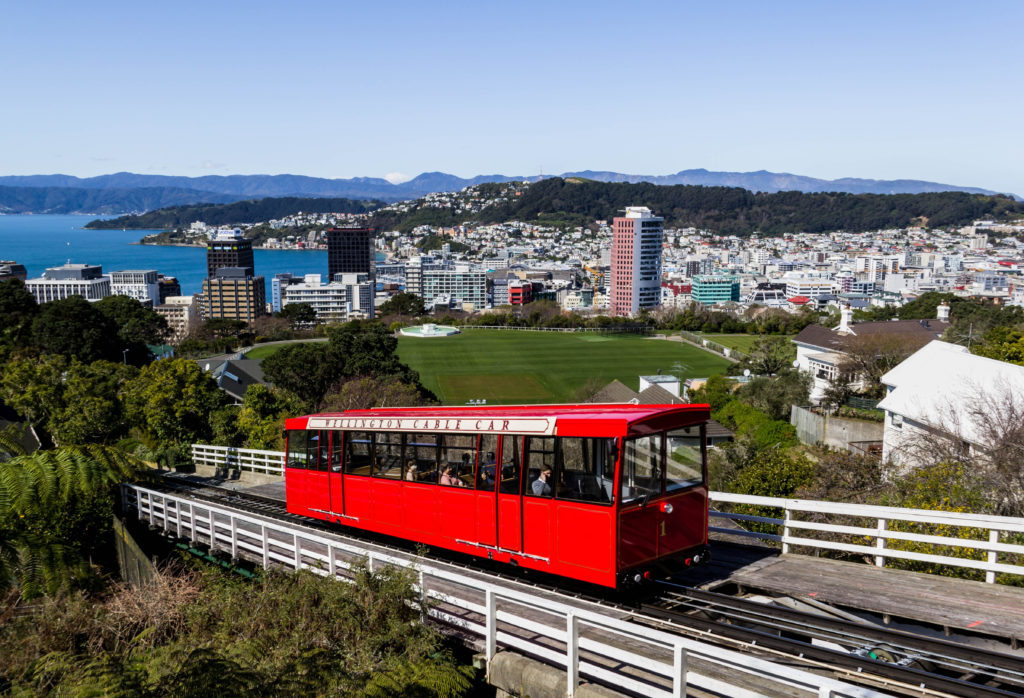
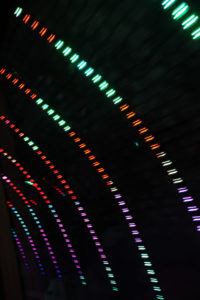
Finally, we visited Te Papa, the national museum in New Zealand. The first picture is of a wahoroa or gateway. You can just see the top of the entrance opening at the very bottom of the picture. This would serve as the entrance to a fortified village. It is a woodcarving made of totara. Totara is a strong wood frequently used in Maori carvings. Ancestors are represented above the entrance opening.
The next pictures are of a wharenui, or Maori meeting house. The space in front of the meeting house is the marae atea, which means place of encounter. The meeting house is named Te Hono ki Hawaiki which means “link with the ancestral homelands.” The carvings represent these ancestors. It is meant to be a meeting place for all New Zealanders and reflects the “bi-cultural partnership” shared by the people of New Zealand.
The New Zealand government posted this information about the marae:
All people live in Te Ao Marama, the world of light, created when our ancestral parents, Ranginui and Papatūānuku, were forced apart. The floor of Te Marae can be seen as Papa, the Earth mother, with Rangi, the sky father, above. Our wharenui can be seen as Tāne, the son who forced his parents apart, thereby opening a space for us to live in.” (Reference is https://www.tepapa.govt.nz/visit/whats-on/exhibitions/te-marae).
The last picture is at the rear of the house. The central picture (two figures) represents the signing of the Waitangi Treaty between the Maori and New Zealanders. To the left and right of this picture are figures of ancestors who might have arrived in New Zealand in the past 200 years and examples of the jobs in which they engaged. Some of these occupations include farmers, teachers, clergy and artists.
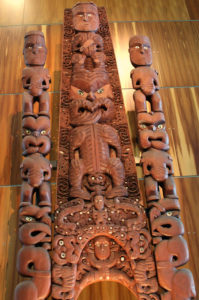
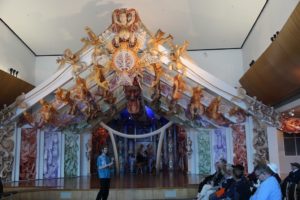


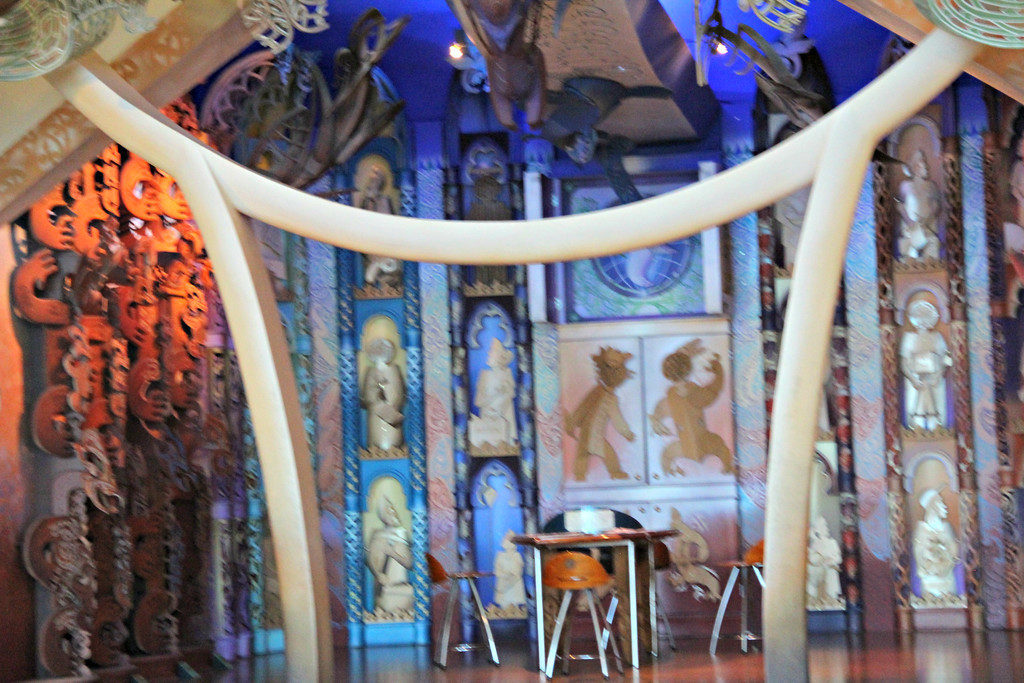
The wharenui and marae atea are part of a larger display called Rongomaraeroa. In addition to the meeting house, it includes the entrance, or waharoa. This is pictured immediately below and was actually outside. It also includes a stained glass door, which is in the second picture, depicting Ranginui, the sky father. When the door is opened, it pushes up above the ceiling, rising above the floor which represents the earth mother. This symbolizes the separation of Rangi and Papa.
